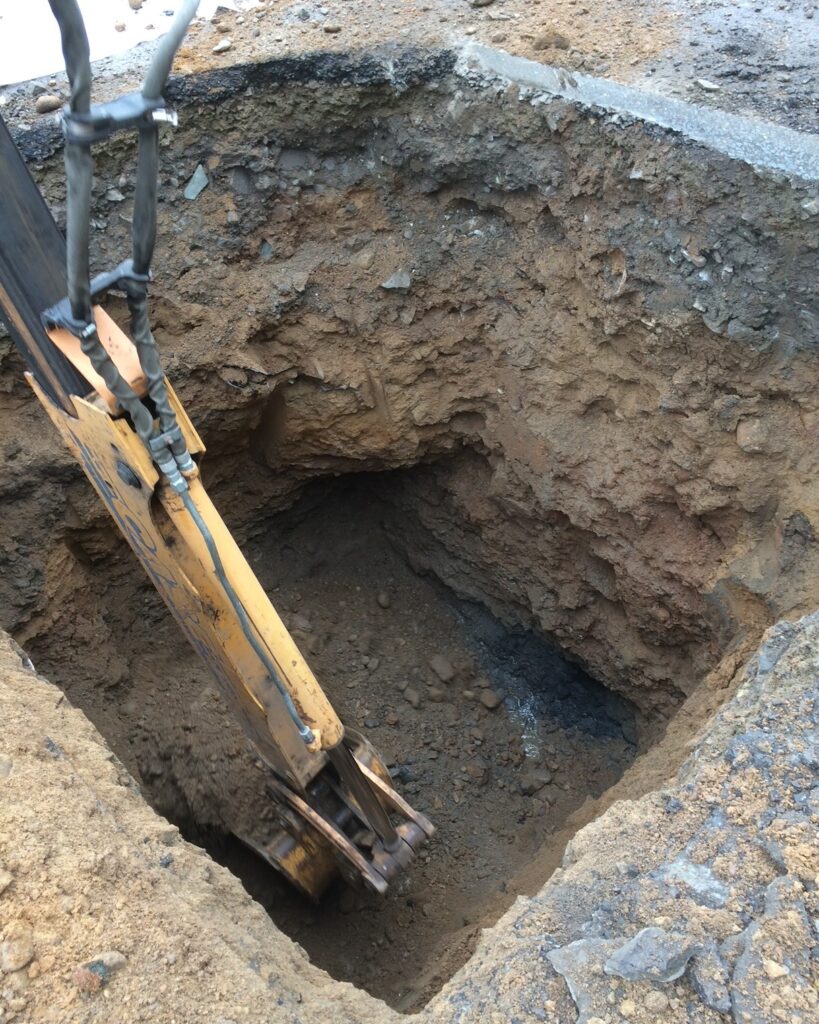Test Pits
Test Pits and the Process
Preparation
The initial step to test pitting is preparing the required paperwork to report the findings as each layer of soil is excavated.
Site Investigation
To start, a site investigation will be conducted to determine the required location. This is based on project scope, site size, and regulatory requirements. The site will be marked and recorded.
Equipment Required
The necessary equipment for test pit excavation includes a CAT scanner, compass, photographic kit, shovels, hand drills, safety gear, to name a few. Depending on the depth and complexity of the project, machinery such as backhoes or excavators may be used.
Excavation
Test pits are typically shallow holes ranging from a few feet to tens of feet deep. The size and shape of the pits may vary, but they are typically 3 to 6 feet wide and rectangular or square in shape.
Sampling the Soil
As the pit is excavated, soil samples are taken at various levels and the recording will continue at each depth. These samples are collected in labeled containers and sent to a laboratory for further analysis. The number and depth of soil samples depend on the project requirements and the variability of soil conditions.
Groundwater Monitoring
During the excavation, monitoring the presence and level of groundwater is done. Sampling may be done using specialized equipment such as bailers or piezometers if groundwater is found. Groundwater samples provide valuable information about their quality and potential impact on the project.
Documentation
Detailed observations continue throughout the test pit process, including the soil type, color, texture, and any other relevant characteristics. All information is recorded and included in the site investigation report.
Backfill and Restore
Once the required soil and groundwater samples have been collected and observations made, the test pits are backfilled with the excavated soil. The hole will be backfilled with the subsoil and may need to be finished with the topsoil. This restores the area to its original condition, addressing any disruptions.
Laboratory Analysis
The soil and groundwater samples obtained from the test pits are sent to a laboratory for analysis. The laboratory tests can include chemical, physical, and geotechnical investigations to assess soil properties and groundwater quality.
Reporting
The laboratory results are analyzed and integrated into a comprehensive report that assesses the soil and groundwater conditions at the site. This report helps inform the design and construction processes, identifying potential challenges or necessary mitigation measures.
Why Choose Stewart Builders
Stewart Builders knows that specific procedures and requirements for test pits may vary depending on regional regulations and project specifications.
Therefore, consulting with our environmental consultants and geotechnical engineers is needed to ensure the appropriate methodology is followed for a given project.
Contact Us For Test Pit Services
